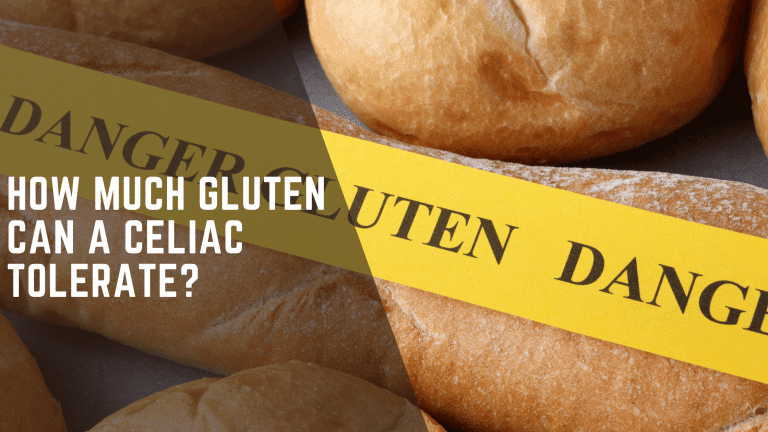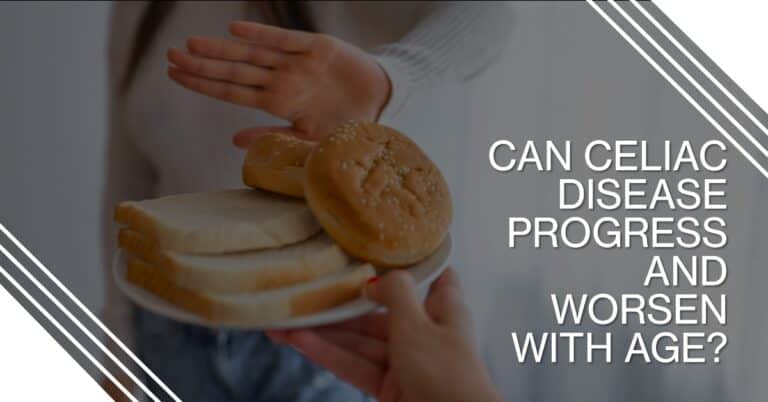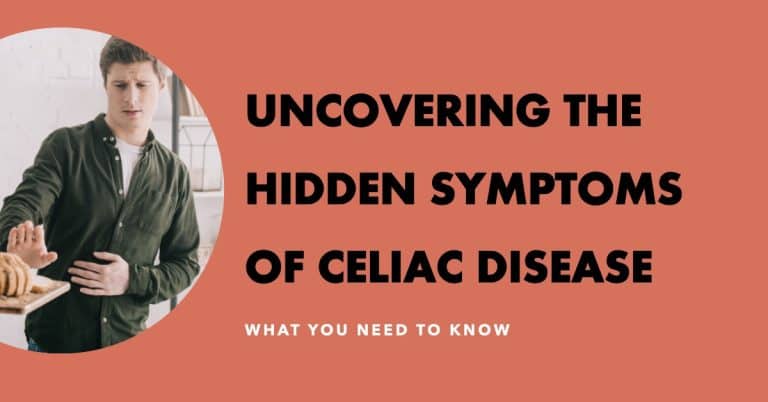To Eat or Not to Eat? A Celiac’s Battle with “May Contain” Warnings

My vigilance in deciphering food labels and ingredient lists is essential for maintaining my health and well-being as a celiac.
One particular challenge I constantly face are those pesky “may contain” warnings.
Like the plague, I avoid them at all costs while navigating through the world of gluten-free safety. And if you’re celiac as well, I strongly recommend you do the same…
Continue reading as I share my experiences and insights on dealing with these warnings from a celiac’s perspective and how it impacts our daily lives.
Key Takeaways
- ‘May contain’ warnings can be vague and confusing, leading to increased apathy and frustration for people with celiac disease and food allergies.
- Gluten-free labelling requires products to have 20 parts per million or less of gluten and should not have any ‘may contain’ warnings for gluten.
- Cross-contamination risks can be managed with effective staff training and good practices, but excessive use of ‘may contain’ warnings is causing people to become less cautious.
- Allergy labelling should be clearer and more effective, with may contain warnings used only when absolutely necessary. Work needs to be done to improve consistency and reliability of such warnings.
Don’t Ignore “May Contain” Warnings: Why It Matters for Celiacs Like Me
If you’re living with celiac disease, like me, you know that it takes more than just avoiding gluten-containing foods to manage your symptoms.
Ensuring that our meals are truly gluten-free is a daily challenge, and one often overlooked aspect of this struggle is the importance of understanding “may contain” warnings on food labels.
You might think these warnings are merely suggestions, but I’m here to tell you otherwise. They play a crucial role in keeping us safe from accidental exposure to gluten.
What Are “May Contain” Warnings?
When you see a food label with the phrase “may contain,” it means that while the product’s ingredients don’t necessarily include gluten or other allergens, there’s still a chance they could be present due to cross-contamination during manufacturing.
These warnings can take different forms, such as:
- “May contain traces of wheat”
- “Processed in a facility that also processes gluten/wheat”
- “Made on equipment that also processes wheat/gluten”
Even though the food item itself may not have gluten as an ingredient, it’s possible that traces of gluten from other products made in the same facility find their way into our seemingly harmless snack.
Why Should I Care About These Warnings?
As someone with celiac disease, I’ve learned how critical it is to avoid even tiny amounts of gluten.
Consuming even trace amounts can trigger uncomfortable symptoms like nausea, vomiting, abdominal pain, bloating and constipation – not exactly what we want when we’re trying to enjoy a meal!
On top of immediate symptoms, long-term exposure to small amounts of gluten can lead to potential complications like malnutrition and intestinal damage.
That’s why paying attention to those “may contain” labels is so important for people like us who need absolute certainty about whether we’re consuming safe food.
How Can I Avoid Gluten Cross-Contamination?
To ensure that you’re not accidentally consuming gluten, follow these tips when grocery shopping and dining out:
Step 1
Read labels carefully: Always double-check all ingredients listed on the packaging and take “may contain” warnings seriously.
Step 2
Choose certified gluten-free products: Look for products with a gluten-free certification from a trusted organization like the Gluten-Free Certification Organization (GFCO).
Step 3
Dine at dedicated gluten-free restaurants: Although they may be harder to find, eating at entirely gluten-free establishments reduces the risk of cross-contamination.
Step 4
Communicate your needs clearly: When dining out, inform the server or chef about your allergy and ask questions to ensure they understand the severity of your condition.
Remember, it’s always better to be cautious than to put our health at unnecessary risk.
By paying close attention to “may contain” warnings, we can enjoy delicious meals without worrying about triggering our celiac symptoms or causing long-term harm to our bodies.
Labelling and Warnings on Food Items: Explained
As someone with celiac disease, I know all too well the frustration of trying to decipher whether a product is safe for me to eat or not.
‘May contain’ warnings can be so vague and confusing that it’s almost impossible to make an informed decision.
And the worst part? It can lead to increased apathy towards warnings and cause confusion and frustration for people with celiac disease.
Manufacturers should be held accountable for providing clear and concise labelling that doesn’t leave vulnerable allergy patients guessing. It’s not enough to simply slap on a ‘may contain’ warning and call it a day.
Allergen labelling needs to be improved to make it more reliable and effective. It’s time for a clearer structure to be put in place, one that takes into account the needs of those with food allergies and intolerances.
Until then, I’ll continue to avoid products with ‘may contain’ warnings because risking my health just isn’t worth it.
Unraveling the Secrets of Gluten-Free Labelling: Making Informed Choices
Living with celiac disease, I understand the importance of finding products that are certified gluten-free.
Knowing that these items have been tested to contain 20 parts per million (PPM) or less of gluten provides a sense of security.
The absence of “may contain” warnings for gluten on such products further ensures their safety for consumption.
However, consumer trust in these labels can be undermined when a product labeled as ‘gluten-free’ also has a ‘may contain’ warning for gluten.
Such ambiguity creates confusion and anxiety for individuals like myself, significantly limiting our food choices.
Manufacturers need to recognize the impact their labeling decisions have on vulnerable consumers.
By providing clear and accurate information on product packaging, we can slowly begin rebuilding consumer trust in the food industry while ensuring those living with celiac disease have access to safe and enjoyable meal options.
Improving Consistency and Clarity for Celiacs: Manufacturers Need to Step Up!
To improve the consistency and clarity of allergy labelling, it’s crucial to establish a clearer structure and more effective guidelines for determining when ‘may contain’ warnings are necessary.
While ‘may contain’ warnings are intended to alert consumers to potential allergen risks, their excessive use can lead to confusion and apathy towards warnings. This can be particularly challenging for individuals with celiac disease and food allergies.
Consumer education is also key to ensuring that individuals can make informed decisions about the products they consume.
By providing clear and accurate information on packaging, as well as resources such as allergen-specific apps and guidance from specialist dieticians, people with food allergies and celiac disease can feel more confident in navigating the complex world of food labelling.
Ultimately, the goal should be to create a system that balances the need for accurate information with the practical reality of producing and distributing food products safely and efficiently.
Disclaimer: This content is based on my personal experience as an individual diagnosed with celiac disease and IBS (Irritable Bowel Syndrome) who follows a strict gluten-free diet. This does not constitute medical advice. Please consult a medical professional, nutritionist, or qualified dietitian for personalized, professional advice.






